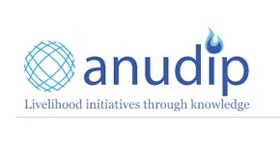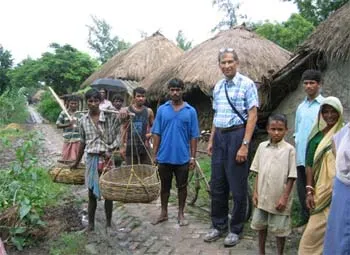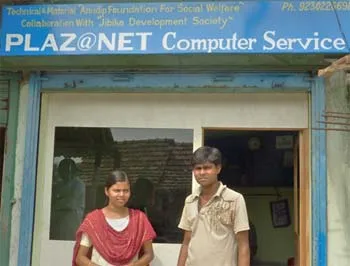Livelihood Initiatives Through Knowledge; Kolkata Based Anudip

Anudip’s work is positioned to bring livelihoods to 100,000 educated but unemployed youth and women of rural India that has largely been untouched byIndia’s growth.Through its integrated model of training, placement, entrepreneurship and IT project services, Anudip’s vision is to unleash the power of rural youth to uplift themselves and their communities out of the vicious cycle of poverty.
Radha Basu tells YourStory more about her initiative.
So Radha, how did the idea come about?

In 2005, drawn in by the vivid monsoon beauty of the Sunderbans in eastern India that was counterpointed by pervasive poverty, Dipak Basu, a technology executive with Cisco Systems and a Reuters Fellow, initiated an ethnographic study that showed economies of desperately poor and marginalized people could be dramatically improved by increase in local employment.Subsequently, Dipak, his wife, that is me- Radha, a software executive, and a group of dedicated social entrepreneurs set up Anudip Foundation, a professionally managed nonprofit enterprise, to address critical livelihood needs of rural people through information technology.
When was Anudip launched and where was your first training centre?
Since 2006 Anudip has been setting up a chain of market aligned skills training centers to impart deep skills in IT, English and job readiness, to empower young people for new economy jobs and entrepreneurship. Agreements with major employers ensure placement ratios well over 80%. From 2009 Anudip has set up district-level outsourcing centers that employ its own graduates to execute projects for global and domestic customers. Anudip is transforming the power of rural youth through impact sourcing, a pioneering effort that is an integrated model of MAST, micro entrepreneurship and IT project outsourcing.
From 2010 Anudip has set up district-level outsourcing centers that employ its own graduates to execute projects for global and domestic customers. The first training center was launched in July 2006 in Namkhana in the southern reaches of the Sunderbans. The class, operated in partnership with community NGO, Asha Welfare Society, was attended by 25 young men and women who walked or bicycled to the full time six-week class.
This can be considered the first instance of developing IT skills in ruralIndiafor livelihood creation.
How has the response been so far?

In its five years of operation, Anudip has trained 9000+ youth and women, mostly living below the poverty line, many of them from minority families, in Howrah, North and South 24-Paraganas districts of West Bengal, and placed more than 80% in jobs with average salary in the Rs. 4,000 to 7,000 per month range, a large proportion located within commuting distance of their native homes.Anudip mentors and financed over 100 of its graduates in setting up IT-enabled businesses in their communities. Anudip also operates rural project centers staffed by 80 of its own graduates. The centers offer best in industry, low-cost IT project services to global and domestic customers.
Who are the various stakeholders involved in the process?
Anudip stakeholders are Educated and unemployed rural youth and women from poor homes in easternIndia; Community NGOs, Anudip partners who bring reach and credibility with students; Institutional donors inIndiaandUSA; Employers offering new economy jobs; and Domestic and global clients who avail of Anudip project services that offer industry-standard quality at rural prices.
Do you monetize? What’s your revenue model?
Yes we do. Anudip receives earned income from Course fees from students; Placement fees from employers; Project revenues from employers; and On-site annuity payments from clients. In 2011-12 Anudip covered 35% of its expenses through earned income.
Feeling of being a NSIH Winner?
From a recent article in Fast Company online magazine:
“With 1.2 billion people,Indiais teeming with idea and places to try out new innovations in energy, water, banking, and health care. ‘Indiais an amazing microcosm,’ says Navi Radjou, an innovation and leadership strategist and a Fellow atJudgeBusinessSchool,University of Cambridge.”
For this reason, in the land of innovation, Anudip is doubly proud of receiving NASSCOM’s social innovation award. We believe that it validates our long-held vision that Information Technology can provide enhanced livelihoods to rural communities in India.
How do you think NSIH will make a difference in your growth?
NISHhas already brought media attention to our work and opportunities to share our experiences at numerous forums. More importantly it has brought potential collaborators with whom we can scale up our mission. It has brought credibility with future donors. It has significantly motivated our hard-working staff. It has validated our integrated model of training, entrepreneurship and projects for Impact Sourcing as a means for deploying IT for large-scale poverty reduction.
All of these factors are critical for realizing Anudip’s goal of imparting new economy skills development for 100,000 marginalized rural youth and women in easternIndia by 2020.







